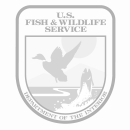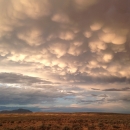Incorporating Connectivity and Wildland Fire Risk into the WAFWA Sagebrush Conservation Design
Funding Year | Amount | Location |
FY22 | $150,000 | Rangewide |
Project Description
We will incorporate both connectivity among core sagebrush sagebrush
The western United States’ sagebrush country encompasses over 175 million acres of public and private lands. The sagebrush landscape provides many benefits to our rural economies and communities, and it serves as crucial habitat for a diversity of wildlife, including the iconic greater sage-grouse and over 350 other species.
Learn more about sagebrush areas and wildfire threat to core sagebrush areas into the WAFWA Sagebrush Conservation Design. For Connectivity we will create spatial action maps that identify areas of greatest functional connectivity between sagebrush core areas and priority riparian riparian
Definition of riparian habitat or riparian areas.
Learn more about riparian areas. We will also evaluate the connectivity of the sagebrush conservation design for Greater Sage-grouse and ungulates that utilize the sagebrush biome.
Partners
Crosswinds Ecological Consulting, LLC, U.S. Forest Service, Conservation Planning Technologies, University of Waterloo, University of Montana


